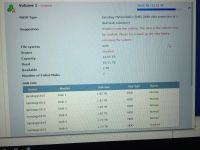I am getting more and more data that I need to somehow secure. Currently, I do it on external USB drives - I rip the same on 2 drives. I would have to buy another one and I'm wondering whether to invest in the US. Sufficient capacity for me is 2 TB (+ second disk in raid 1 I think). Only now like this:
I have a router on the ground floor, TV on the floor, computers all with wifi. Data - photos and videos - come mostly from cells that send it to the cloud (google disk and one drive). And now I have a vision:
-NAS on the TV on the cable - better movie transfer (?)
- connecting to the router via wifi to access NAS via the internet
-NAS downloads copies from the cloud itself, or the cells send copies, not to Google and MS, but to a "private" cloud at home
From what I see, few home NASes have wifi and must be connected to the router via Ethernet. If I do so, I will play movies on the TV for half the time. wireless will be smooth?
I have a router on the ground floor, TV on the floor, computers all with wifi. Data - photos and videos - come mostly from cells that send it to the cloud (google disk and one drive). And now I have a vision:
-NAS on the TV on the cable - better movie transfer (?)
- connecting to the router via wifi to access NAS via the internet
-NAS downloads copies from the cloud itself, or the cells send copies, not to Google and MS, but to a "private" cloud at home
From what I see, few home NASes have wifi and must be connected to the router via Ethernet. If I do so, I will play movies on the TV for half the time. wireless will be smooth?



